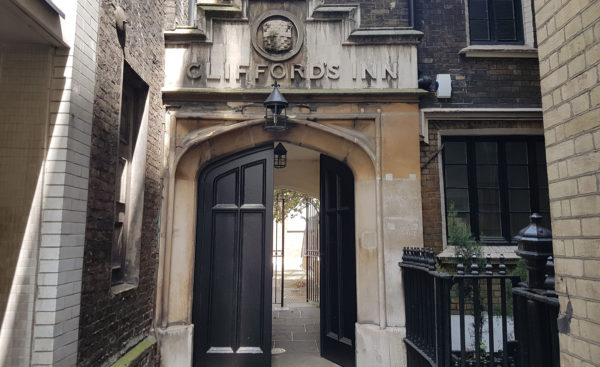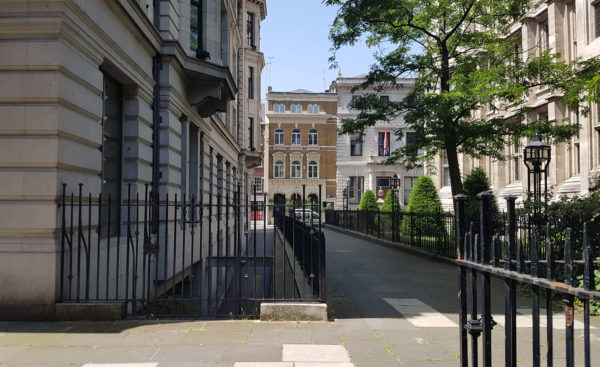This is one of the oldest surviving alleys in London, emerging around Tudor times when the area along Chancery Lane was first starting to be developed from fields.
The alley gave access from Fleet Street to Clifford’s Inn and Serjeants’ Inn which were built behind the imposing St Dunstan in the West church, which is also still on the same site.
The church was founded around the 10th century, but rebuilt in the 1830s, is named after the former Bishop of London and Archbishop of Canterbury, who was until St Becket came along considered to be the principal saint of English Catholics.
The church was built on the main road linking the newish Royal palace in Westminster with the City of London, but was still largely undeveloped land. By the 15th century though, the area was being developed with the early legal inns, which offered training and lodging for aspiring lawyers.
The Inn that the alley is named after, Clifford’s Inn was founded around 1344 when the land was granted to students for a price of £10 per year by the widow of Robert de Clifford, 3rd Baron de Clifford.
It was the first to be formally incorporated as a legal inn, although they didn’t own the land until 1618, when it was bought from the Clifford family for £600, and a reduction in rent to £4 per year.
Clifford’s Inn was governed by a principal and twelve ‘rules’ or governors, and was famous for its after-dinner ceremony, in which the principal took four loaves baked in the form of a cross, raised them above his head and dashed them onto the table three times before throwing them the length of the table. This ceremony continued right into the nineteenth century.
In the early 19th century, Clifford’s Inn was rebuilt to remove the cluster of smaller buildings and courtyards, and a cluster of buildings to the western side, known as Old Serjants’ Inn was demolished to form one large building.
The inn was eventually closed and sold in 1902, with the land sold for £100,000 to a builder, William Willett, and in the 1930s, much of the land behind the church was redeveloped again.
The building that sits between the church and the alley today was built around the same time, in a mock-Elizabethan design.
The passage today leads down a long narrow corridor to the mock-Tudor Grade II listed gatehouse, which was actually built in the early to mid 19th century, then into the wide open spaces of Clifford’s Inn behind.
Apart from the gatehouse at the end, which is locked at weekends, but open to go through during the week, the alley is probably most famous among aficionados of finding odd things, are the long runs of anti-urination deflector shields.
These were a common sight in Victorian London before the widespread arrival of public toilets, and many have since vanished, so this is a rare survivor of that dubious and not entirely vanished facet of human nature after a few too many in the local pubs.
The great unsolved mystery though is that Clifford’s Inn contained an apostrophe, but Cliffords Inn Passage never had one. Why?











Another interesting piece, thanks. The builder William Willett is of course the advocate of daylight saving time, now known as british summer time, and remembered in Petts Wood, both with a road name, Willett Way, and a sundial in the middle of the National Trust woods which is set to daylight savings time. The pub in Station Square is of course The Daylight Inn.
Like many people I find the passages of the City fascinating and welcome your enlightening pieces on them. Two comments though:
1. If the passage dates back to the 17th century or earlier then its name pre-dates the general use of the apostrophe in possessive singular forms (or it was named by a grocer!).
2. To my knowledge, St Thomas of Canterbury, has never been know as “St Becket”. Incidentally he was born in Cheapside within a few minutes walk of Cliffords Inn Passage.